THE ULTIMATE
NEW YORK YANKEES
BASEBALL CHALLENGE

The authors would like to thank Al Blumkin and Dave Zeman for their help in fact-checking this book.
Copyright 2007 by David Nemec and Scott Flatow
First Taylor Trade Publishing edition 2007
This Taylor Trade Publishing paperback edition of The Ultimate New York Yankees Baseball Challenge is an original publication. It is published by arrangement with the author.
All rights reserved. No part of this book may be reproduced in any form or by any electronic or mechanical means, including information storage and retrieval systems, without written permission from the publisher, except by a reviewer who may quote passages in a review.
Published by Taylor Trade Publishing
An imprint of The Rowman & Littlefield Publishing Group, Inc.
4501 Forbes Boulevard, Suite 200, Lanham, Maryland 20706
Distributed by NATIONAL BOOK NETWORK
Library of Congress Cataloging-in-Publication Data
Nemec, David.
The ultimate New York Yankees baseball challenge / David Nemec and Scott Flatow. 1st Taylor Trade Publishing ed.
p. cm.
Includes bibliographical references and index.
ISBN 978-1-58979-328-6
1. New York Yankees (Baseball team)Miscellanea. I. Flatow, Scott, 1966- II. Title.
GV875.N4N46 2007
796.35764097471dc222006037813
 The paper used in this publication meets the minimum requirements of American National Standard for Information SciencesPermanence of Paper for Printed Library Materials, ANSI/NISO Z39.48-1992.
The paper used in this publication meets the minimum requirements of American National Standard for Information SciencesPermanence of Paper for Printed Library Materials, ANSI/NISO Z39.48-1992.
Manufactured in the United States of America.
CONTENTS
, Alan Blumkin
INTRODUCTION
How dare we call this the ultimate New York Yankees baseball challenge?
First and foremost, its designed to give you, our dear reader, the four things you most want in a baseball quiz book: (1) pleasure; (2) a worthy challenge; (3) an opportunity to learn something new about the game you love and the team that, chances are, many of you either most love or else most love to hate; and (4) the assurance that youre in the company of quiz masters who know their stuff. In short, you not only want to match wits, you also like to come away from a book like this with the feeling that youve been enlightened in the bargain.
You will be, you have our guarantee, by the time you finish here. What weve assembled is a seven-game World Series of entertainment, innings one through nine, starting off with rookies and ending with famous Fall Classic events, heroes and villains. Theres a logic to our structure, of course, as there is to all the categories weve chosen. In fact, well alert you right off the bat, as it were, that to score well against our curves, drops and heat you need to be moderately savvy in every on-the-field phase of the Yankees rich history from Hilltop Park to the present day.
That isnt to say, though, that youve got to have a raft of statistics and a host of obscure players at your fingertips. Actually, top marks are there for the taking by anyone who has a reasonable amount of knowledge of the game in general coupled with a good eye for using our clues to zero in on the right answer to even our seemingly most impossible questions.
Before ushering you behind the curtain and showing you how our minds work, first let us show you an example of the type of question we abhor: What Kansas City Royals batter hit into the first triple play in Seattle Mariners history and what Mariner recorded the last out in the play? Unless you happened to see that particular play (which is highly unlikely) or else have a PhD in triple plays (also unlikely), all you can do is throw up your hands and take a couple of wild guesses as to who the two players are. And how much fun is there in that? However, if the question had also provided the clues that the unlucky Royals batter now resides in the Hall of Fame and the Mariner who recorded the last out in the triple play spent most of his career as a backup catcher in the mid-1970s with the Astros, then all the burners would be fired and the question would be a fair one to ask, albeit still not one to our taste.
In a nutshell, thats our approach. A good question doesnt just toss up a mildly interesting but essentially arcane feat. It gives you a reasonable opportunity to nail the player or players who were involved in it by providing enough information about them to allow you to make at least an educated guess. Hall of Famer? Could be Harmon Killebrew who finished his career in KC. But wait! Was Killebrew still around when the Mariners came into existence? No. Then who was? We wont spoil the fun by giving away the answer any more than well spill on the stros backup catcher, but now you get the idea how we work.
Here we are cobbling away in our workshop on three different levels of questions that are more to our taste:
SIMPLE: Who held the Yankees season home run record prior to Roger Maris? Single.
INTERMEDIATE: What is the most recent Yankees World Series entrant to showcase at least one Hall of Fame performer? Careful, you wont win here if you get mired in the wrong year. RBI double.
EXPERT: Who was the only member of the 1941 Yankees to play for the Whiz Kids against the Yankees in the 1950 World Series? Learning that he was a catcher and later was a ML coach who finished the 1967 season at the helm of the Atlanta Braves will help experts score here. Three-run homer.
Question 1 is so easy that it merits no clues and rates only a single.
In question 2 youre given fair warning that it contains clues when its read carefully. One clue is an effort to steer you away from an answer that is wrong and the other clue tries to direct you to the right answer. Good for you if youve already spotted that our clues sometimes come in the form of wordplay, puns or even anagrams.
The clues in question 3 are straightforward and the reward one of the highest offered in our book. In addition, you get a sampling of the standard abbreviations we use throughout the book. Here its ML, short for major league. Elsewhere youll encounter other standard abbreviations such as NL for National League, AL for American League, PCL for Pacific Coast League, LA for Los Angeles, KC for Kansas City, ABs for at bats, BA for batting average, SA for slugging average, ERA for earned run average, CG for complete games and OPS for on-base percentage plus slugging average.
We wont spoil your fun by giving away the answers to our sample questions. Consider them a bonus. And, incidentally, there are a number of other bonuses in our book, not the least of which is our invitation to compile your own BA, SA, RBI and total base totals as you cruise along. There are over 660 at bats in The Ultimate New York Yankees Baseball Challenge or about the same number youd get in a season if you were in there for all 162 games. Dont expect to hit above .300, though, unless you really know your Yankees. But by the same token, you have our assurance that not even diehard Yankees fans are likely to outhit readers that have a firm knowledge of all of major league history. This, after all, is the ultimate Yankees test for the ultimate well-rounded fan.
One final note. The statistics in our books in rare cases will differ from those in other reference works and even in a few instances from those accepted by Major League Baseball. An example is Roger Mariss RBI total in 1961. Most reference works continue to credit Maris with 142 RBI and the undisputed American League leadership. However, reliable research has documented that Maris had only 141 RBI in 1961, tying him with Jim Gentile for the AL RBI crown. There are other such occasions when we might present data that is slightly ahead of the curve. But there are no occasions in this book when the correct answer to a question rides on conflicting data.
Next page

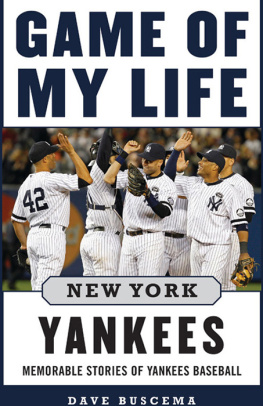
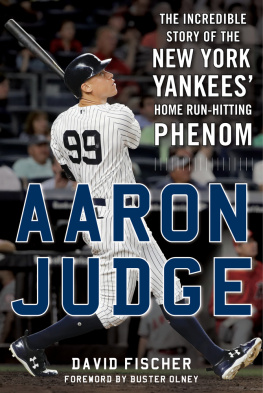
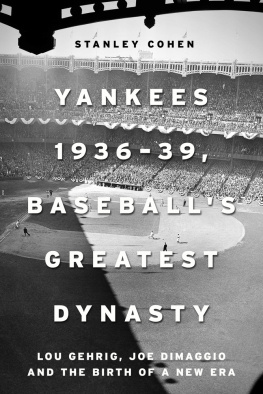
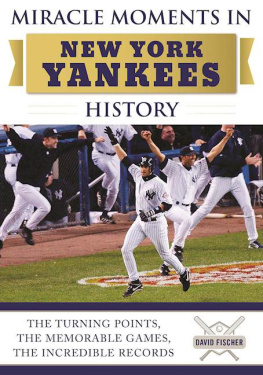
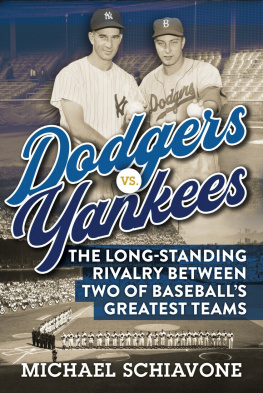
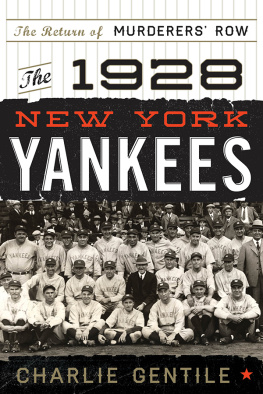

 The paper used in this publication meets the minimum requirements of American National Standard for Information SciencesPermanence of Paper for Printed Library Materials, ANSI/NISO Z39.48-1992.
The paper used in this publication meets the minimum requirements of American National Standard for Information SciencesPermanence of Paper for Printed Library Materials, ANSI/NISO Z39.48-1992.